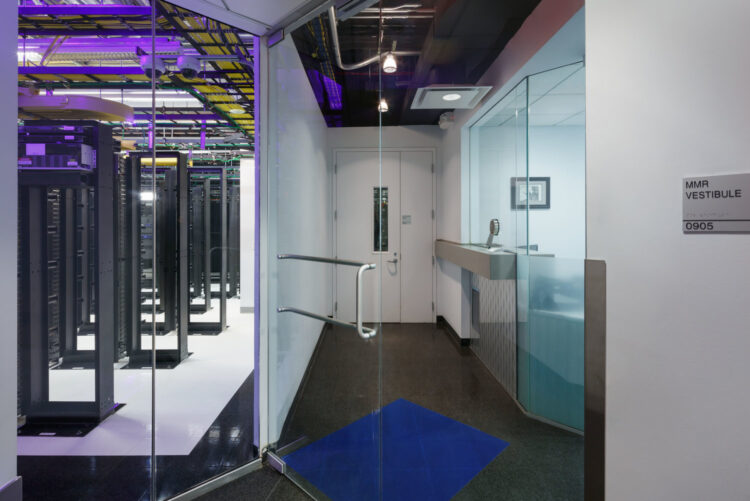When it comes to selecting the ideal location for your business’s IT infrastructure, New York City stands out as a prime destination for colocation services. With its unparalleled connectivity, strategic location, and dense population, Manhattan offers advantages that are difficult to match elsewhere. Let’s dive into the key differences between New York colocation and colocation in other cities, focusing on fiber type, interconnectivity, and the unique benefits of hosting infrastructure in Manhattan.
Table of Contents
Fiber Infrastructure and Interconnectivity: New York vs. Other Cities
New York’s Advanced Fiber Network

One of the major differentiators for New York City colocation is its advanced fiber optic network. Manhattan is equipped with some of the most sophisticated and extensive fiber networks in the world. The core of this network lies along 9th Avenue fiber highway, home to key data center telco hotels and internet access providers, which sit directly on top of the main fiber conduit. This proximity to such a dense and high-capacity network allows businesses to connect directly to thousands of carriers and networks, all within the same building.
New York City’s fiber network is primarily composed of dark fiber and lit fiber options, with many data centers offering ultra-low latency connections. Dark fiber provides businesses with the flexibility to manage their own networks, while lit fiber offers managed services with high reliability and speed.
Comparison with Other Cities: In contrast, many other cities do not have the same level of fiber network density or the direct access to such a large number of carriers. For example, while cities like Chicago or Dallas also offer robust colocation services, their fiber networks are not as densely connected as Manhattan’s. This means businesses in these cities may face higher latency and reduced interconnectivity options, potentially leading to slower data transfer rates and higher costs.
The Strategic Advantage of Interconnectivity in Manhattan
Interconnectivity in Manhattan is another significant advantage that sets New York apart. The city is home to several major Internet Exchange Points (IXPs), where internet traffic is exchanged privately between networks. These IXPs are crucial for reducing latency, as they allow data to travel shorter distances by bypassing long-haul carriers and connecting directly to the destination network.
Comparison with Other Cities: In other cities, the lack of dense IXPs can result in data being routed over longer distances, increasing latency and costs. For instance, a data packet originating in a secondary market might need to travel through multiple hops to reach its final destination, while in New York, it can be routed directly, saving both time and money.
The Manhattan Data Center Advantage: Proximity and Latency
Proximity to London and Europe
New York’s geographic location provides a strategic advantage for businesses with global reach. Being on the East Coast, Manhattan is closer to London and Europe than many other U.S. cities. This proximity translates into lower latency for transatlantic communications, which is crucial for industries that rely on real-time data exchange, such as finance, media, and technology.
Comparison with Other Cities: Cities like San Francisco or Los Angeles, while strong tech hubs, are located farther from Europe, leading to higher latency for international data transfers. Businesses operating out of these cities may experience delays in communication with European partners, which can be a significant disadvantage in today’s fast-paced digital environment.
The Impact of Telco Hotels on Connectivity
Manhattan’s data centers, often referred to as telco hotels, are uniquely positioned above the main fiber conduit on 9th Avenue. These facilities provide direct access to the primary fiber routes that connect the city to the rest of the world. The concentration of carriers and networks within these buildings enables businesses to interconnect with multiple providers, offering redundancy, flexibility, and cost savings.
Comparison with Other Cities: In other cities, data centers are often more dispersed, and the same level of carrier and network density is not available. This can limit the ability of businesses to build robust, redundant networks and may lead to higher costs for interconnection services. Additionally, the absence of such strategic positioning over main fiber conduits can result in slower response times and less efficient data routing.
Cloud Providers and Serving the New York Metro Population
Cloud Provider Presence in New York

New York City is home to a significant number of major cloud providers, including Amazon Web Services (AWS), Microsoft Azure, and Google Cloud. The presence of these providers in Manhattan means that businesses colocating their infrastructure here can benefit from direct access to cloud services, reducing latency and improving performance.
Metanet’s Direct Connections to Cloud Providers
One standout New York colocation provider, Metanet, takes this advantage a step further. Metanet offers direct connections to major cloud providers such as AWS and Azure, which are physically located in the same buildings as Metanet’s facilities. This close proximity allows for ultra-fast hybrid cloud setups, where businesses can seamlessly mix their private cloud environments with public cloud services.
These direct connections, known as AWS Direct Connect and Azure ExpressRoute, offer significant benefits:
- Ultra-low Latency: By directly connecting to AWS and Azure, businesses can significantly reduce latency, leading to faster data transfer and improved application performance.
- Increased Security: Direct connections provide a more secure link to the cloud by bypassing the public internet, reducing exposure to potential cyber threats.
- Cost Efficiency: By reducing the distance data needs to travel, businesses can lower data transfer costs, particularly for high-volume data exchange between private and public clouds.
Why a Direct Connection Matters
For businesses relying on cloud services, the ability to directly connect to cloud providers in the same building is a game-changer. It allows for the creation of a true hybrid cloud environment where sensitive data can be securely maintained on a private cloud, while scalable resources from public clouds like AWS and Azure can be leveraged as needed. This setup not only enhances operational flexibility but also optimizes performance, making it ideal for industries with stringent data requirements.
Comparison with Other Cities: In other cities, even where cloud providers have a presence, the ability to directly connect within the same building is rare. Businesses often have to rely on third-party connections or longer interconnection paths, which can introduce latency, increase costs, and reduce the overall effectiveness of a hybrid cloud strategy.
Serving the NY Metro Population
The New York Metropolitan Area is home to nearly 20% of the U.S. population, making it one of the most densely populated regions in the country. By colocating infrastructure in Manhattan, businesses can ensure faster response times and better service quality for this large and economically significant population. For industries like e-commerce, media streaming, and financial services, where milliseconds matter, being close to the end-user is a critical advantage.
Comparison with Other Cities: In comparison, cities like Houston or Miami, while important in their own right, do not serve as large a proportion of the national population. This can result in higher latency for end-users in the Northeast, potentially leading to slower page loads, buffering, or delays in service delivery. For businesses targeting the East Coast market, New York City offers a strategic advantage that is hard to replicate elsewhere.
Conclusion: Why New York Colocation Reigns Supreme

In conclusion, New York City’s colocation services offer unmatched benefits in terms of fiber infrastructure, interconnectivity, and proximity to key markets. The dense fiber network, strategic positioning of data centers, and proximity to Europe make Manhattan a top choice for businesses looking to minimize latency and maximize connectivity. Additionally, the presence of major cloud providers and the ability to serve a large portion of the U.S. population from a central location further solidify New York’s position as the premier destination for colocation services.
Providers offering direct connections to AWS, Azure and Google cloud services, businesses can take advantage of a truly hybrid cloud setup, ensuring high performance, reliability, and cost-efficiency. While other cities may offer viable colocation options, the unique advantages of Manhattan make it the gold standard for hosting IT infrastructure. For businesses aiming to stay competitive in the global market, colocating in New York City provides the technological edge needed to ensure high performance and operational success.

